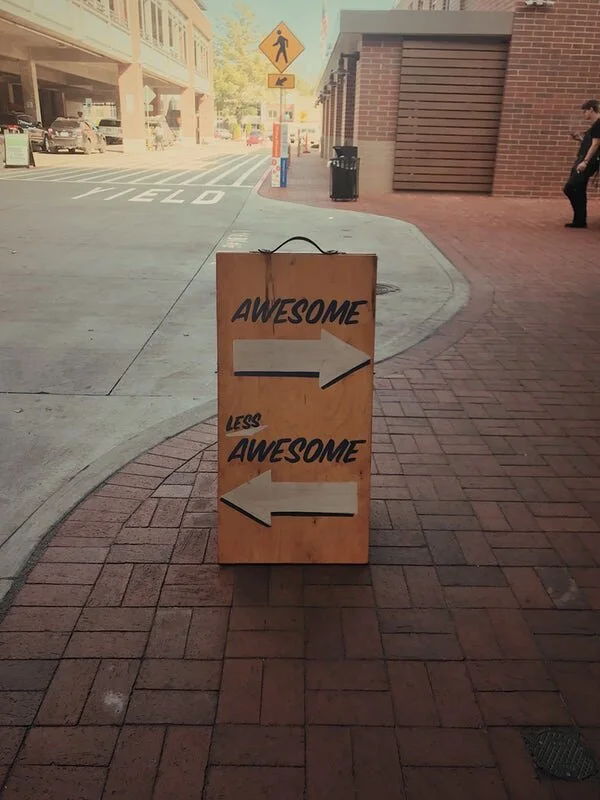Activator Walking Poles: Watch them in action and see the benefits
Lose 5 Pounds by Hardly Trying
I Know If You’re a Professional Writer
6 Signs Your Personal Trainer is Awesome
This Idea is Brilliant
A Picture's Worth a Thousand Words
Failure to Launch -- Almost
The first time I experienced Nordic walking, I was immensely disappointed.
I was a competitive power walker, occasional runner and lover of sweaty workouts of all kinds.
When the Vancouver-based Nordic walking company Urban Poling called me (over 10 years ago now) to see if I'd test drive their poles and the Nordic walking technique, of course I said yes.
I'd vaguely heard that Nordic walking was a huge hit in Europe, and I was keen to try it for both myself and my personal training clients.
When the poles arrived, I carefully watched the accompanying DVD at least three or four times.
Feeling confident that I had the basics memorized, a colleague and I headed out with a spring in our step to Toronto's lovely Sunnybrook Park to give them a test run.
It was a frustrating experience to say the least.
Just when we thought we were getting the rhythm and coordination right, our boot tips would slip back on the asphalt and we'd lose our propulsion. My boot tips were also doing an odd bounce.
We agreed that it wasn't a very challenging activity.
With no one to troubleshoot for us, we eventually gave up, tucked the poles under our arms and trudged home.
Fortunately, a short time later I participated in the Urban Poling Instructor Certification Course.
In those four hours, all of my issues were quickly resolved. Turned out that I just needed an experienced eye to give me some quick tips and corrections.
While Nordic walking isn't a difficult skill to learn, it's the small details that can throw you off.
The slipping boot tip issue was resolved once I learned that my weaker left arm wasn't swinging fully up into position. Suddenly I felt my core and triceps tighten as my arms began to work in sync.
I also learned several ways to increase the intensity and that I should press more firmly on the ledge of the handles to stop the bouncing. Problems solved.
As the course wrapped up, it was clear to me why so many people are hooked on the Nordic walking workout.
Moral of the story? If you want to fully understand and master a new skill, self teaching is a good place to start. But it will never replace the experience of learning from a professional instructor.
A Simple Trick That Makes A.M. Workouts More Doable
I love exercising in the morning. It's a great feeling to already have my workout crossed off my to-do list when I'm sitting down to breakfast.
Leaping out of bed at 5:30 or 6am isn't a problem for me during the bright sunny days of spring and summer. But come fall and winter, I'm more likely to just open one eye at the beep of the alarm. And then I might just start that internal conversation of justifying a sleep-in while I snuggle deeper under the covers.
My solution to this universal issue is a bit unorthodox, but it works every time: I wear my workout clothes to bed.
The idea came to me when I realized that the stretchy top and yoga shorts I often wear for workouts weren't that different from my pajamas. Sometimes I wear the entire outfit and sometimes just the top with my pajama bottoms.
For me, already being dressed magically eliminates the "should-I-go-or-should-I-stay" self talk that can so easily start on a dark and dreary morning. If I'm already dressed or half dressed, my first thought is always that it would be silly to not just get up and go.
If you try my workout-clothes-as-pajamas trick, let me know how it works for you. Have another strategy to tackle early morning lethargy? I'd love to hear it!
Micro-Workouts to Boost Your Fitness
I get it. I understand. You're busy.
But the "I don't have time to exercise" excuse just doesn't fly anymore.
Everyone from the New York Times to the Globe and Mail is reporting on research showing that even one or two minutes of physical activity here and there can make a difference in your health.
No need to change clothes, no fancy gym membership required and no travel time to factor in.
Just step away from your desk, take a deep breath and ... go.
Got 10 seconds? Strike a power pose
Amy Cuddy's TED Talk has everyone buzzing about how body language changes how we think and feel about ourselves. Strike a power pose, she says, to boost your confidence (think Wonder Woman with hands on her hips or Superman with fist thrust upward).
What you can do right now:
Swing your torso and arms down toward the floor with a big knee bend, then swing up to finish with your arms overhead in a big victory V and your face and chest lifted. Repeat three or four times moving and breathing rhythmically.Got 1 minute? Recharge with a full-body exercise
If you choose carefully, you can work scores of muscles simultaneously with one exercise.
What you can do right now:
Lower yourself down into a push-up (with your hands on your desk or the kitchen counter) as you lift one foot a few inches off the ground. Then straighten your arms as you lower your foot. Repeat several times alternating sides.Got 4 minutes? Pump it up
Grab some dumbbells or an exercise tube, and go for it.
What you can do right now:
Set a stopwatch, and then continuously perform one minute of each of the following exercises: biceps curls, triceps kickbacks, biceps curls with overhead press, and bent-over rows.
The 7-Minute Vacation Workout
When my personal training clients go away on holidays, some of them stick to their exercise programs and it's not an issue at all. But others find it hard to work out when they're away from their regular routines.
It's not a complete disaster when they get home (as long as they haven't overeaten...beware of the cruise ship buffet!), but those first few workouts back are always a struggle.
Instead of backsliding on your fitness gains, make time for the Scientific 7-Minute Workout, courtesy of the wonderful New York Times columnist Gretchen Reynolds.
It's a quick and thorough routine that's all about classic exercises that most of us already know. If one's not to your liking, modify it or repeat a previous one—just keep moving!
It's short, sweet and intense, and it lets you feel virtuous once you've completed it, even though it's a fraction of the length of your regular program.
Need more of a challenge? Reynolds offers an advanced version at the same link above.
Give it a try, and let me know what you think!
How Do You Measure Up? (Find out in 3 Minutes)
There's an old management adage that we use a lot in the fitness world:
"You can't manage what you don't measure."
What's it mean? Simply that if you don't start with a baseline you won't know if you're improving, staying the same or losing ground
When you get fit the right way, changes in the way you feel and look appear immediately but gradually.
And when anything happens gradually, it's easy to forget just how far you've come—unless you measured and recorded your starting point.
This is why I start all my personal training clients with a very brief (and painless) fitness appraisal. What I measure is different for each client and is always based on the goals we've set.
If you don't have access to a fitness professional (and even if you do), here's an interesting, quick and fun online alternative.
Norwegian rock-star-cardio-researcher Ulrik Wisløff has created a simple assessment, based on a huge and growing data sample, that lets you easily estimate your fitness level by answering a few basic questions.
Use his 3-minute questionnaire-style assessment to benchmark where you are today. Then get moving with a regular exercise program and revisit the questionnaire in three to four weeks to check your progress.











